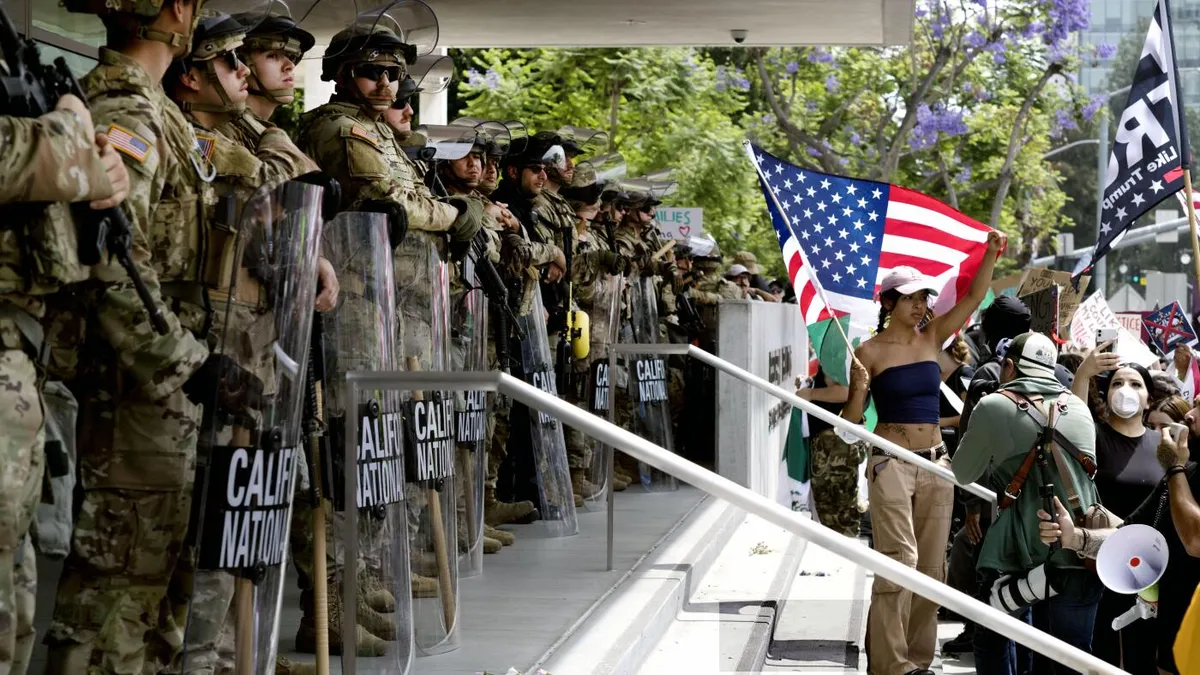
A recent ruling by a California appeals court has granted President Trump the authority to maintain control over the California National Guard troops stationed in Los Angeles. This decision comes as a temporary setback for Governor Gavin Newsom, who has been attempting to reclaim control of the National Guard. The court's ruling is part of an ongoing series of legal disputes concerning the management of the National Guard in the state.
President Trump asserted his control over the California National Guard, citing the necessity of preventing interference with the operations of Immigration and Customs Enforcement (ICE) agents. His actions were prompted by protests against ICE tactics, which had escalated tensions in the region. The court's order, while temporary, effectively blocks a previous ruling made by U.S. District Judge Charles Breyer, who had found Trump's deployment of the Guard to be unlawful.
In a detailed 36-page ruling last week, Judge Breyer concluded that Trump's utilization of the National Guard in Los Angeles was illegal. He argued that the President was exceeding his statutory authority and violating the Tenth Amendment of the United States Constitution, which delineates the powers allocated to state and federal governments. Breyer acknowledged instances of violence during the protests but emphasized that the events in Los Angeles did not constitute a rebellion against federal authority.
On June 7, following a day of escalating protests, President Trump made the unprecedented decision to federalize and deploy approximately 4,000 National Guard members and 700 U.S. Marines, despite Governor Newsom's objections. This marked the first time in 60 years that a President had activated a state's National Guard against the wishes of its governor. The last similar occurrence was in 1965 when President Lyndon Johnson deployed troops to Alabama to protect civil rights demonstrators.
During a recent hearing, California's legal team argued that Trump's federalization of the National Guard troops was unlawful and that he failed to consult Governor Newsom, which is typically a customary practice. Newsom contended that the military presence would escalate tensions between protesters and law enforcement and that local agencies were capable of managing the protests effectively.
On the other hand, attorneys representing the federal government claimed that Trump acted within his constitutional rights by deploying the National Guard. They argued that the administration had met the necessary legal obligations by coordinating with the adjutant general of the California National Guard, who acts on behalf of the governor. The Trump administration maintained that ICE agents were unable to enforce federal laws in Los Angeles without the assistance of the National Guard, citing instances where protests devolved into rioting.
Despite Judge Breyer's order for Trump to relinquish control of the National Guard, the appeals court intervened within just three hours, effectively blocking the lower court's ruling. This ongoing legal battle highlights the complexities surrounding the deployment of National Guard troops and the delicate balance of power between state and federal authorities.
As the situation continues to evolve, it remains to be seen how this legal dispute will impact the operations of the National Guard and the ongoing protests in Los Angeles. The ruling underscores the contentious nature of federal and state relations, particularly in times of civil unrest.